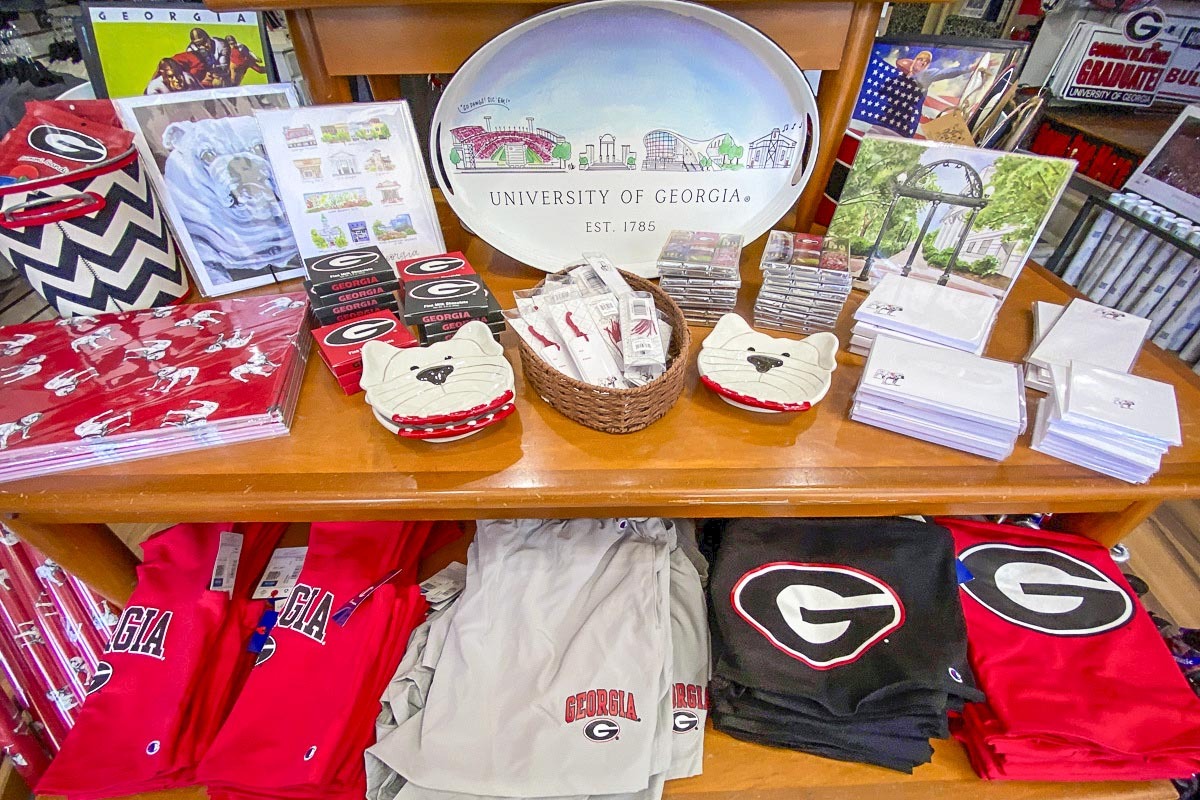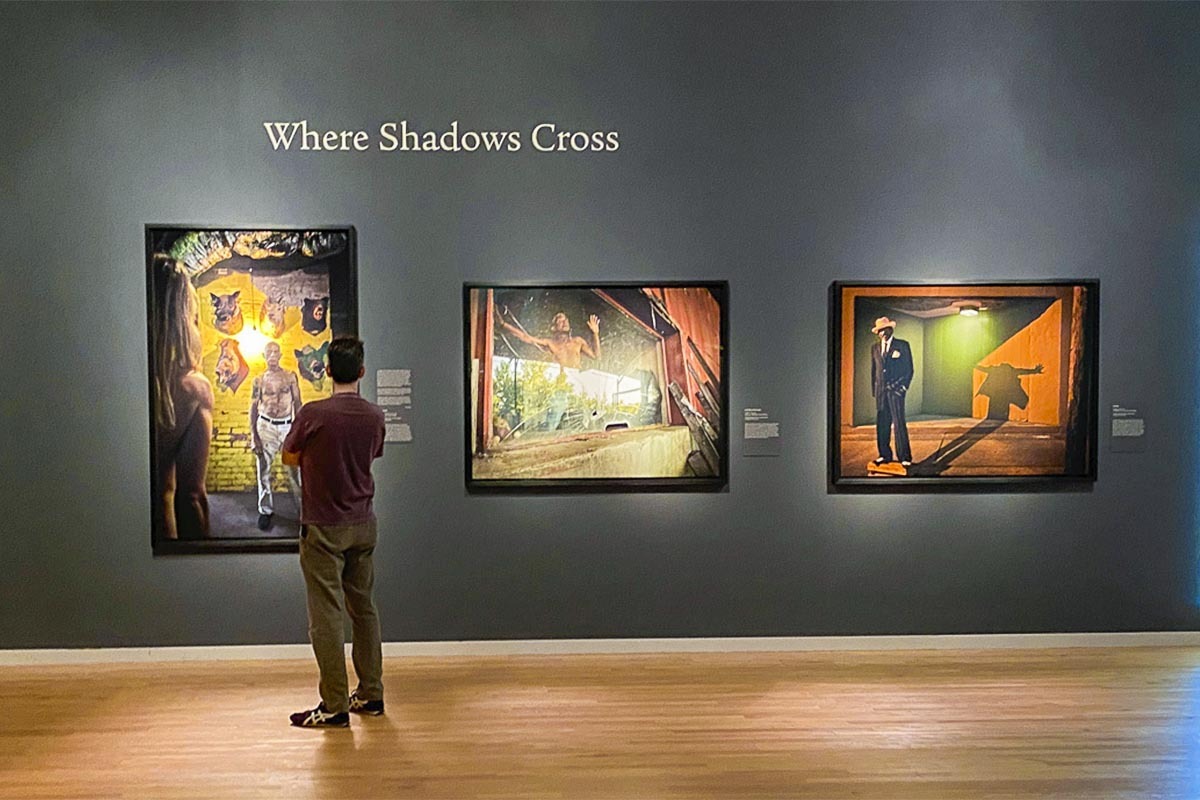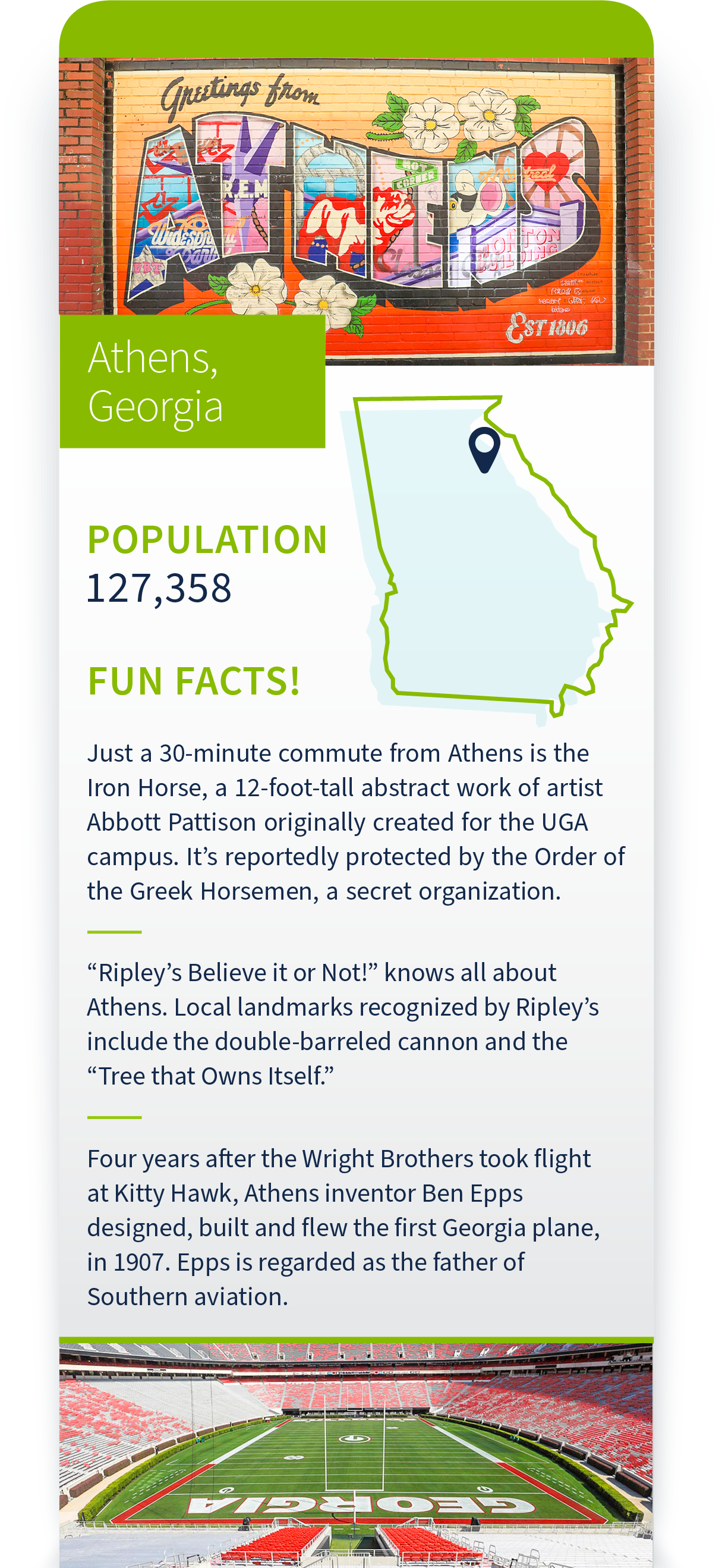Good Towns is a regular feature of Doing More Today, showcasing the people and places that make communities unique. Our latest Good Town story ties into college football season – a fitting topic considering Regions is the Official Bank of the Southeastern Conference.
It must be game week in Athens, Georgia.
How can you tell? There are people everywhere downtown and twice as many cars circling as the day before. City workers start rolling out portable potties to handle the influx of the red-and-black clad faithful, some of whom are known to greet their football kinfolk with full-throated, dog-like barks.
Then there’s the marquee at 1785 Bar & Grill that says it all: “SATURDAYS IN ATHENS ARE BACK.”

The Greetings from Athens mural, located in a tight downtown alley, highlight's this Good Town's best assets. / GARY TRAMONTINA PHOTOS

A Rueben sandwich and a side of fries - the perfect lunch order at Trappeze Pub, a laidback downtown eatery.

The Pasta Depalma, one of the most popular dishes at the downtown Italian restaurant.

The Spirit of Athens, standing outside City Hall, commemorates the 1996 summer games. Athens hosted numerous events, including soccer.

Thirty minutes from campus, Abbott Pattinson's Iron Horse sculpture stands 12 feet tall.

All the fashion that's fit to wear on a Saturday game day is available at the shops and boutiques downtown.
Welcome to our latest Good Town, Athens, home of one of the nation’s oldest public universities and the indisputable king of college football. Fans have always supported their Bulldogs, but the tone is a little different now. Georgia is going for its third consecutive national title, something no one has accomplished since coach Bernie Bierman led the University of Minnesota to a three-peat back in 1936.
But there’s more than gridiron glory here. This is one of the best campus towns around, filled with a rich history, musical magic and idyllic spaces to escape for an hour or a day. And it’s all possible because the folks at the Eagle Tavern liked to party a little too hearty.

Here a Dawg, there a Dawg. Everywhere you turn there's Georgia merchandise for sale. / GARY TRAMONTINA PHOTOS

Designed in Greek Revival style, the UGA Chapel was completed in 1832. It now serves as a student center.

In all, there are around 30 individually painted bulldogs. This one stands guard in front of the Chamber of Commerce.

On Saturday game days, Sanford Stadium would be the seventh-largest city in Georgia thanks to its 92,746-seat capacity.

Originally constructed as a summer home, the Taylor-Grady house in an Athens institution.

A statue of UGA Founder Abraham Baldwin, is situated out front of Old College.

The double-barreled cannon was an experimental weapon created during the Civil War.
A Historic Campus and a Football Palace
The University of Georgia is one of the three oldest public universities in America. UGA was the first to have a state charter – in 1785, three years before the U.S. Constitution was ratified – while the University of North Carolina was the first to hold classes and graduate students. William & Mary is also in the conversation, thanks to the oldest campus buildings. However, the Virginia institution spent its first 200 years as a private school.
Athens can thank its lucky stars for the original UGA trustees. The first location they considered for a campus was Watkinsville, a popular stagecoach stop on the Georgia frontier, until (as legend has it) they were a little spooked by the drinking, dancing and brawling at the Eagle Tavern. Instead, they settled for pastoral farmland 10 miles away, a perfect choice, now known as Athens.
The campus’ initial building, Old College, still stands, giving an Ivy League vibe to the tree-covered campus. Nearby is New College, constructed half a century later to handle exploding enrollment. The Chapel Bell, which arrived in 1832, is still used to celebrate athletic victories, campus milestones and anything that deserves a clang or two.
A driving tour across the expansive campus provides a history lesson, taking you past buildings from the Colonial days through the antebellum 19th Century into more modern times, although the 1970s additions are the least aesthetically pleasing. Fraternity and sorority houses look like mansions, with students frantically setting up outdoor tables for the influx of alums headed their way for autumn Saturday reunions.
Need a place to rest your head on a football weekend? The 9,000-square foot President’s House is going on the market for an expected princely sum, with proceeds slated to go to a student success initiative.
A block up Prince, the Taylor-Grady House was constructed as a summer home for Irish-born cotton merchant Robert Taylor. It is now the go-to venue for weddings and social functions. Taylor made it his permanent residence in the mid-19th Century when his sons enrolled at UGA.
Tucked into a hillside in the middle of campus is the best-known home of all: Sanford Stadium, which opened 94 years ago between East Campus and Sanford Drive. It’s one of the most iconic vistas in college football history, with 92,000 seats and privet hedges surrounding the field of play that were part of the original design.
For the first half of Sanford Stadium’s existence, fans with influence could watch games from an elaborate railroad car along the tracks outside the East end zone, feasting on meals served on expensive China in what was considered the sport’s original skybox. It’s also where the “Track People” congregated for a free view. But the railroad gravy train ended in 1981, when the need for more seats led the university to close off the view.
It’s not quite the Bambino’s curse, but before the current run of back-to-back College Football Playoff crowns, Georgia had gone decades without a national title. The previous one came in 1980, one year before the track view ended. Choose your own assumptions.

The legendary Morton Theatre anchors Hot Corner, a historic African American business district downtown. / GARY TRAMONTINA PHOTOS

A UGA grad, Caleb Miles helps run the historic Georgia Theatre.

The exterior of Wuxtry Records, where UGA students are reconnecting with their parents' - and grandparents' - love of vinyl albums.

Wuxtry Records manager Nathaniel Mitchell has seen the resurgence of vinyl record and compact disc sales.

The Music Walk of Fame recognizes local legends, including Athens' own R.E.M.

The title of this book says it all. Take our word for this.

Vinyl, vinyl everywhere, with CDs lining the walls.

The quiet before the storm, 30 hours before the next kickoff.

A student heads to campus before downtown swells up with weekend visitors.

By Friday morning, fans start streaming downtown in preparation for the next big game.
Vaudeville, Rock ‘n’ Roll and Vinyl
Speaking of icons, the most recognizable sight in downtown Athens is the construction crane thanks to a never-ending economic boon. Maintaining the original charm, the city center features century-old churches and early department stores, peppered with restaurants, bars, retail and seemingly endless upscale hotels.
Built in 1910, the Morton Theatre stands as a reminder of the days of vaudeville and post-Reconstruction African American entrepreneurship. It hosted comedians, theatrical shows and musical heavyweights such as Cab Calloway and Bessie Smith in its heyday, anchoring one of the South’s most successful Black business districts, Hot Corner.
A few blocks up the street is the Georgia Theatre, a renowned live music destination. The location once served as the YMCA, and an early home gym for the Georgia Bulldogs basketball team. But it was converted in the late 1970s into a music venue and survived a devastating fire in 2009 thanks to a subsequent rebuild.
This is where Athens’ own B-52s paid to perform to launch a career. It’s where The Police began their first major U.S. tour. Two other Athens’ bands, R.E.M. and Widespread Panic, broke out nationally with help from the Georgia Theatre. John Mayer shot a music video here. The Derek Trucks Band recorded a live album.
Another corner away sits one of the most unique retail stores in all of Athens, Wuxtry Records, an independent entity that sells vinyl albums, CDs and intriguing memorabilia. R.E.M. band member Peter Buck came to Athens from Atlanta to work here. Another former Wuxtry employee, Brian Burton, released the “Grey Album” while tending to customers. He’s better known as Danger Mouse today.
According to manager Nathaniel Mitchell, vinyl records account for 70 percent of music sold at Wuxtry, but compact discs are surging back in popularity.
“Vinyl is the best music format,” Mitchell said. “I like the look and the sound of the records and the elaborate artwork. Other forms, to me, are diminished. But CDs are making a comeback because a lot of college kids are inheriting older cars with CD players.”

An art lover admires the Georgia Museum of Art's "Where Shadows Cross" exhibit, which is mesmerizing. / GARY TRAMONTINA PHOTOS

At the Georgia Museum of Art, intriguing works welcome you even in the courtyard.

The entrance to the State Botanical Garden of Georgia gets you accustomed to the natural beauty that's in store.

Master Gardener Laura Minish has horticultural tips, which she offers for free as a volunteer.

A look from atop a trail at the Conservatory, part of the sprawling botanical gardens.

Students on a field trip meander through the lower part of the Conservatory.

The gardens invite you to walk, explore and relax.

A "Hill Country Red" Oxblood Lily up close and personal.
Ninety-nine Degrees in the Shade
Even on gameday, you can find peace and quiet nearby.
The Georgia Museum of Art has been the official museum of the state of Georgia since 1982. Housed on campus, it features 19th and 20th Century classic works from across the globe, Italian Renaissance paintings and hours of mesmerizing distractions.
“Where Shadows Cross,” the work of artist Jim Fiscus, is the current showcase, taking images of mundane Southern life to lure you into his creations. Some of the settings are uniquely small town, such as one of our previous Good Towns, Clarksdale, Mississippi, and Sylacauga, Alabama.
Just a stone’s throw away, on the edge of campus, is the 313-acre State Botanical Garden of Georgia at the University of Georgia. It, too, soothes your soul with walking trails alongside flowers and trees from all corners of the planet.
As we visit, two days before the next big football game, we see smiling and laughing school-age children skipping by on field trips, a couple enjoying a quiet morning coffee on the patio and college students studying in the corner of the Conservatory, which beats any library setting. Near the Shade and Native Floras Garden, a dozen or so members of The Ramblers, armed with expensive cameras and binoculars, gather for some weekly bird watching.
“This is the state botanical garden, so we strive to serve as much of the state of Georgia as possible,” said Daun Fest, the associate director of this expansive green space. “But we can’t do it without our volunteers.”
It’s 99 degrees in the shade today, but Fest points toward the annual Winter Wonderlights, which begin just before Thanksgiving and continue throughout the holidays. It’s the garden’s biggest fundraiser. There’s also a gorgeous chapel on site that hosts smaller weddings of 125 people or less. For bigger events, people can rent out the Conservatory.
But after a morning of gorgeous landscapes, we’re headed back to town. Gameday awaits, and college football’s king intends to preserve its reign.
